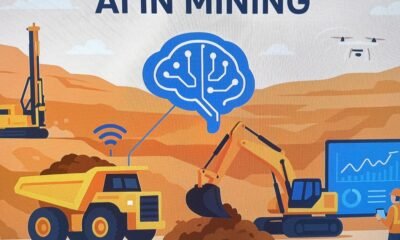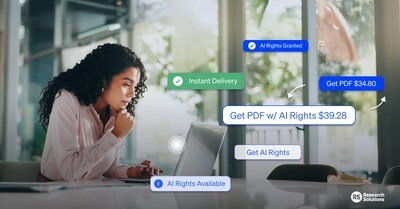Tools & Platforms
Laptop or tablet? Plus, power packs, headphones and AI advice – The Irish Times
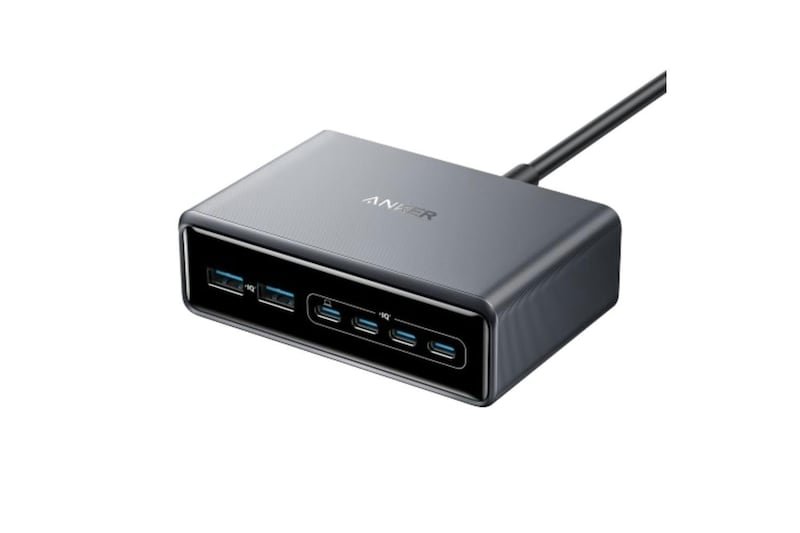
College students are coming back to their lecture halls this week or starting out on their third-level studies. If you are an incoming first year, there is plenty to get to grips with, from reading lists and schedules to travel passes and finding your way around the campus.
On top of that, you probably have some extra technology requirements. Perhaps a laptop upgrade is on the cards or you might think of investing in a tablet.
So what are the tech essentials and what are simply nice to have?
Laptops
The laptop is not yet dead, despite some predictions of its demise. In fact, things seem to be going well for the device the tablet was supposed to replace.
Picking the right one can be difficult, though; you need to strike a balance between a laptop that will last a few years and not overpaying for technology you don’t actually need. In other words, the top-spec machines are great but they aren’t necessary for everyone.
There are some things to consider before you make your choice. First is the size of the device. If you plan on carrying it around everywhere, something reasonably compact and light is best. Most people find the 13- to 14-inch screens offer the best balance in terms of portability while still giving you enough room to work with.
That should cover you for creating documents, browsing online, editing images and videos, and creating content for your social channels if that is what you are into.
For those who need something with a bit more screen space – for design, perhaps – a 15-inch display might suit better, but will be more clunky to carry around.
Once you have decided on the size, it is time to look at its main components. Think of the processor as the brain of the computer. On a budget, the AMD Ryzen 3 series or Intel Core i3 will be fine for web browsing and word processing.
Moving up the chain, AMD’s Ryzen 5 offers a good balance of performance and efficiency, comparable to the Intel Core i5 chip. For more demanding tasks, the Ryzen 7 or Core i7 chips are worth considering, although they will incur a higher cost.
Then you get into RAM, which will allow your computer to deal with heavier workloads and run more tasks at once without stuttering to a halt. Windows requires a minimum of 4GB. Bumping it to 8GB is sufficient for basic workloads.
To ensure your computer lasts longer, consider upgrading to 16GB if possible. Video editing, photo editing, gaming and other power-hungry applications will need more RAM, so consider your future needs too.
And when it comes to on-board storage, aim for 512GB if you can. You can supplement it with external and cloud storage, but that requires either carrying around a second device – not ideal if you want to stay mobile – or an internet connection, which isn’t always possible.
Mac versus Windows is the ongoing battle, but ChromeOS is also an option for students on a budget, or Linux if you are technically inclined. The decision will ultimately depend on what software you need to run. If you have no specific requirements, then your choices are much wider. Some students will need to run specific software for their course – computer-aided design programmes, for example – that will have minimum system requirements.
Power
If you have a new-ish laptop with a power-efficient chip, you probably won’t run into too many issues with your device’s battery. But occasionally, they take a battering, and when you find your battery dwindling to alarming levels, having some sort of backup is handy.
Doing more with less is a good approach, and these days most devices can be charged over USB-C, thanks to some heavy nudges from the European Commission. In theory, you could carry one charger in your bag and power all your devices at various times throughout the day.
If you need more than one device charged, though, something with multiple USB options is a good idea. Take the Anker GaNPrime 200W Charger (€90, Harvey Norman). Not only does it charge both USB-A and USB-C devices, it can also power up to six devices simultaneously.
It has a total power rating of 200W, which means you can charge two 14-inch MacBook Pro devices in under half an hour or several USB-C-enabled smartphones simultaneously. It also has a built-in protection system to make sure your devices charge safely and at a suitable temperature.
However, there will inevitably be a time when you are away from a power outlet and caught with a low battery. The Chargeasap Flash Pro Plus ($200, chargeasap.com), a graphene 25000mAh battery, cannot only charge your smartphone and Apple Watch, but also your laptop.
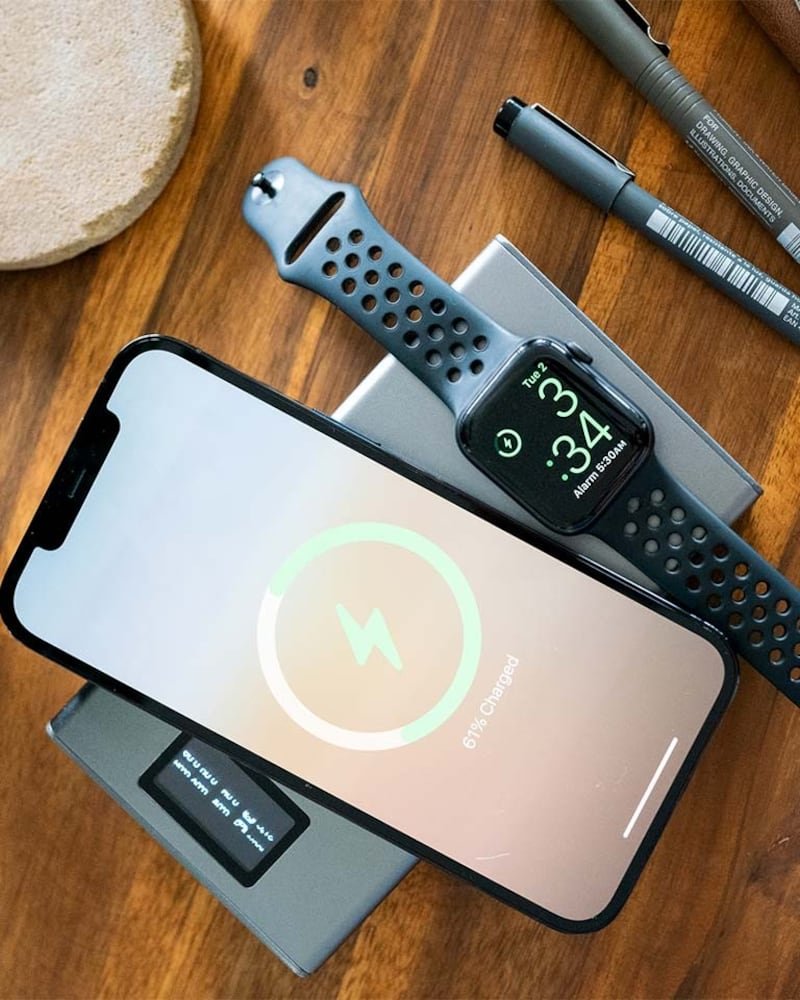
Noise-cancelling headphones
If you don’t already own a pair of these, you need to invest in some, asap. Not only can they help you to block out the bus noise on the commute home, they may also save your sanity in the library around exam time. Among the best in the over-ear category are the Sony WH-1000XM6 (€450, Currys).
Apple users may prefer the in-ear AirPods Pro (€279, Apple), but there are plenty of options out there that will cross the platform barrier and work with your laptop too, such as the Bose QuietComfort Active ear buds (€150, Harvey Norman)
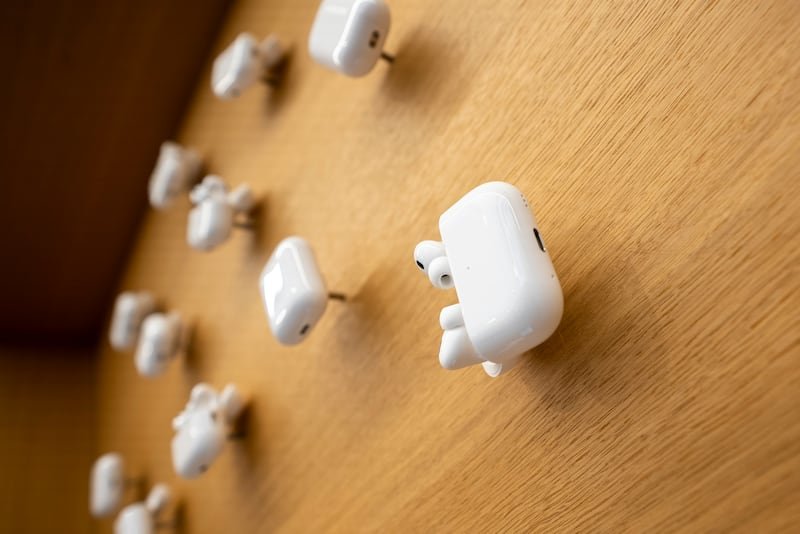
If you are just in need of some decent earplugs without any added distraction, however, the Loop Quiet 2 (€20, Loop.eu) will block out enough noise to help you focus.

AI
Artificial intelligence is creeping into our daily lives, from AI-enabled chatbots talking us through customer service nightmares to research assistants that can create podcasts from our documents and debate the finer points of our research topic.
The capabilities out there vary, however. Apple is still trailing slightly on AI integration. although devices such as the iPhone 15 Pro and Pro Max, and newer models, support the handful of Apple Intelligence features that have been launched in Europe. That includes tools to manage your inbox, refine messages and documents, and edit photographs. Broader searches call in ChatGPT.
Samsung and Google have taken it a step further. Gemini, Google’s AI-enabled assistant, has now become the default assistant on your smartphone, with its latest Gemini machine learning models and chatbots integrated into the system.
There are other ways to use AI, however, assuming your college course allows it. Grammarly, for example, will help you polish up college projects and essays, while also keeping an eye out for potential plagiarism, assuming you take out the Pro subscription at €144 for the year. Its verdict on this article, for example, was a resounding “zero copied text”.
[ I have advice for prospective third-level students, and it’s not what you thinkOpens in new window ]
ChatGPT, meanwhile, can help you research a specific topic with its latest GPT-5 model which, according to founder Sam Altman, has “PhD level intelligence”. Whether you buy into that or not, ChatGPT can be a handy research partner. Just remember, as with all AI, to check up on its sources before you believe what it tells you.
The current favourite AI-enabled tool around here though is Google’s NotebookLM. Free to use, you can create notebooks for research topics with up to 50 sources each. The AI will then analyse the sources and explain it to you in bullet points, create an FAQ-style sheet or study guide, or even generate an AI podcast, where two synthetic hosts discuss the topic in detail.
Tools & Platforms
Ted Cruz bill would let Big Tech go wild with AI experiments for 10 years

In the one-pager, Cruz noted that “most US rules and regulations do not squarely apply to emerging technologies like Al.” So “rather than force Al developers to design inferior products just to comply with outdated Federal rules, our regulations should become more flexible,” Cruz argued.
Therrier noted that once regulations are passed, they’re rarely updated and backed Cruz’s logic that AI firms may need support to override old rules that could restrict AI innovation. Consider the “many new applications in healthcare, transportation, and financial services,” Therrier said, which “could offer the public important new life-enriching service” unless “archaic rules” are relied on to “block those benefits by standing in the way of marketplace experimentation.”
“When red tape grows without constraint and becomes untethered from modern marketplace realities, it can undermine innovation and investment, undermine entrepreneurship and competition, raise costs to consumers, limit worker opportunities, and undermine long-term economic growth,” Therrier wrote.
But Therrier acknowledged that Cruz seems particularly focused on propping up a national framework to “address the rapid proliferation of AI legislative proposals happening across the nation,” noting that over 1,000 AI-related bills were introduced in the first half of this year.
Netchoice similarly celebrated the bill’s “innovation-first approach,” claiming “the SANDBOX Act strikes an important balance” between “giving AI developers room to experiment” and “preserving necessary safeguards.”
To critics, the bill’s potential to constrict new safeguards remains a primary concern. Steinhauser, of the Alliance for Secure AI, suggested that critics may get answers to their biggest questions about how well the law would work to protect public safety “in the coming days.”
His group noted that just during this summer alone, “multiple companies have come under bipartisan fire for refusing to take Americans’ safety seriously and institute proper guardrails on their AI systems, leading to avoidable tragedies.” They cited Meta allowing chatbots to be creepy to kids and OpenAI rushing to make changes after a child died after using ChatGPT to research a suicide.
Tools & Platforms
Jeff Kirk Named Executive Vice President of Applied AI at Robots & Pencils

Jeff Kirk
Robots & Pencils, an AI-first, global digital innovation firm specializing in cloud-native web, mobile, and app modernization, today announced the executive appointment of Jeff Kirk as Executive Vice President of Applied AI. A seasoned technology leader with a career spanning global agencies, startups, and Fortune 100 enterprises, Kirk steps into this newly created role to accelerate the firm’s AI-first vision and unlock transformative outcomes for clients. As EVP of Applied AI, Kirk will lead the firm’s strategy and delivery of AI-powered and enterprise AI solutions across industries.
Explore how Robots & Pencils blends science and design to build market leaders.
Kirk’s track record speaks for itself, with AI breakthroughs that fueled customer engagement and business growth. He founded and scaled Moonshot, an intelligent digital products company later acquired by Pactera, where he spearheaded next-generation experiences in voice, augmented reality, and enterprise digitalization. At Amazon, he served as International Product & Technology Lead for Alexa, driving AI-powered personal assistant expansion to millions of households and users worldwide. Most recently, at bswift, Kirk led AI & Data as VP, delivering conversational AI breakthroughs with the award-winning Emma assistant and GenAI-powered EnrollPro decision support system.
Across each of these roles runs a common thread. Kirk builds and scales innovations that transform how industries work, creating technologies that move from experimental to essential at breathtaking speed.
“Jeff has been at the frontier of every major shift in digital innovation,” said Len Pagon, CEO of Robots & Pencils. “From shaping the future of eCommerce and mobile platforms at Brulant and Rosetta, to pioneering global voice AI at Amazon, to launching AI-driven customer experiences at bswift, Jeff has consistently delivered what’s next. He doesn’t just talk about AI. He builds products that millions use every day. With Jeff at the helm of Applied AI, Robots & Pencils is sharpening its challenger edge, helping clients leap ahead while legacy consultancies struggle to catch up. I’m energized by what this means for our clients and inspired by what it means for our people.”
Across two decades, Kirk has built a reputation for translating complex business requirements into enterprise-grade AI and technology solutions that scale, stick, and generate measurable results. His entrepreneurial mindset and hands-on leadership style uniquely position him to help clients experiment, activate, and operate AI across their businesses.
“Organizations and their employees are under pressure to innovate on behalf of customers while simultaneously learning to collaborate with a new type of co-worker: artificial intelligence,” said Kirk. “The steps we take together to learn to work differently will lead to the most outsized innovation in our industries. I’m thrilled to join Robots & Pencils to push the boundaries of what’s possible with AI, to deliver outcomes that matter for our clients and their customers, and to create opportunities for our teams to do the most meaningful work of their careers.”
Kirk began his career at Brulant and Rosetta, where he worked alongside Pagon and other Robots & Pencils’ executive team members, leading engineering and solutions architecture across content, commerce, mobile, and social platforms. His return to the fold marks both a reunion and a reinvention, positioning Robots & Pencils as a leader in applied AI at scale.
About Robots & Pencils
Robots & Pencils is a global digital innovation firm helping organizations modernize applications and unlock the full potential of AI, cloud-native technologies. With delivery centers in Canada, the U.S., Eastern Europe, and Latin America, and deep partnerships with AWS, Salesforce, Databricks, and others, the company offers a unique combination of UX excellence and elite engineering talent. Since 2009, Robots & Pencils has delivered forward-thinking solutions across Financial Services, Health Tech, Education, Consumer, Energy, and Technology sectors, earning a reputation as a nimble, high-value alternative to traditional global systems integrators. Visit us at robotsandpencils.com.
Tools & Platforms
Live-translating AirPods are a glimpse into how AI will shape the future of work
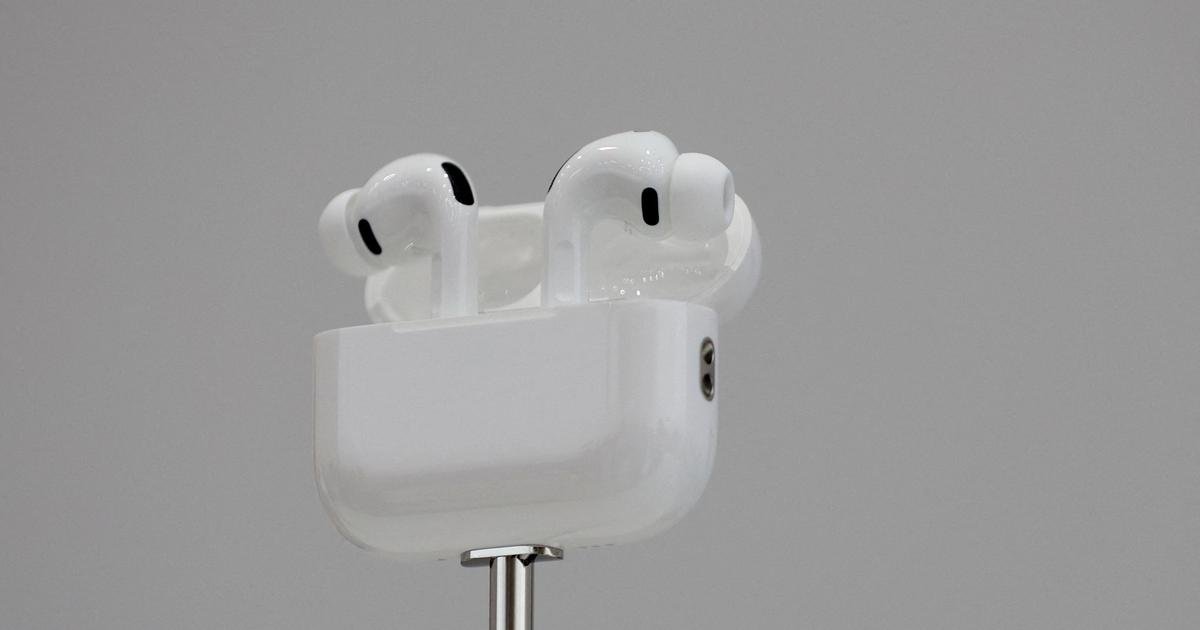
People mostly yawned through Apple’s new product lineup unveiled this week. It’s hard to get jazzed about the two millimeters of pocket space reclaimed by the thinner model.
But live-translating AirPods are one of the more exciting and tangible uses of AI I’ve seen so far. They foreshadow AI that doesn’t just make things cheaper, but makes entirely new things possible.
The new AirPods are a concrete example of something I’ve had trouble envisioning, 18 months into this hype cycle. It’s easy enough to see the cost savings from AI as technology replaces humans. But by PWC’s estimate, two-thirds of AI’s contributions to global economic growth will come not from gains in productivity but from gains in consumption. In this vision, AI will spark the creation of more goods that people want to buy, and make them available to more people.
Railroads didn’t just reduce the cost of shipping goods; they opened the West. Fiber-optic cable didn’t simply make communication easier, but birthed the internet. Transformative technologies create bigger pies, not just cheaper ones.
Language barriers act as invisible tariffs on the global economy. They add friction to financial markets, artificially constrain talent pools, and leave money stranded on the wrong side of comprehension. Flip that switch, and suddenly every market becomes accessible, and good ideas trapped behind a language wall get unleashed. Goldman Sachs can deploy its sharpest minds in Brazil without Portuguese fluency. My failed hunt for custom blazers in Hong Kong last year can become a completed transaction. (Also: tips for next time, please.) Netflix’s “localization” model becomes possible for new industries.
There’s something dystopian about a world where everyone is sporting AirPods all the time, but I suspect the future is heavy on wearables anyway. The question is whether that hardware expands or merely entertains. Technology that opens up new avenues meets the hype in a way that AI replacing baby investment bankers or advertising studios just doesn’t.
-

 Business2 weeks ago
Business2 weeks agoThe Guardian view on Trump and the Fed: independence is no substitute for accountability | Editorial
-
Tools & Platforms1 month ago
Building Trust in Military AI Starts with Opening the Black Box – War on the Rocks
-

 Ethics & Policy2 months ago
Ethics & Policy2 months agoSDAIA Supports Saudi Arabia’s Leadership in Shaping Global AI Ethics, Policy, and Research – وكالة الأنباء السعودية
-

 Events & Conferences4 months ago
Events & Conferences4 months agoJourney to 1000 models: Scaling Instagram’s recommendation system
-

 Jobs & Careers2 months ago
Jobs & Careers2 months agoMumbai-based Perplexity Alternative Has 60k+ Users Without Funding
-

 Podcasts & Talks2 months ago
Podcasts & Talks2 months agoHappy 4th of July! 🎆 Made with Veo 3 in Gemini
-

 Education2 months ago
Education2 months agoVEX Robotics launches AI-powered classroom robotics system
-

 Education2 months ago
Education2 months agoMacron says UK and France have duty to tackle illegal migration ‘with humanity, solidarity and firmness’ – UK politics live | Politics
-

 Funding & Business2 months ago
Funding & Business2 months agoKayak and Expedia race to build AI travel agents that turn social posts into itineraries
-

 Podcasts & Talks2 months ago
Podcasts & Talks2 months agoOpenAI 🤝 @teamganassi








